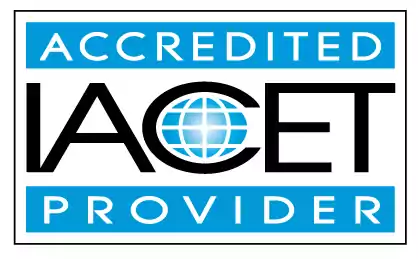Describe the components of emergency preparedness in the child care setting.
Learn about emergency preparedness in the child care setting, including the components and legal requirements. Understand what constitutes an emergency and the necessary steps for child care professionals to be prepared. Explore this vital aspect of early childhood education and child care centers to ensure the safety of children in any unforeseen situation.Trainings incorporating this outcome
Age group
Proficiency Level
120 hours courses
Related Outcomes
- Identify and understand the requirements of Child Care Subsidy (POC), Child and Adult Food Program, MSDE Child Care Credential, Tiered Reimbursement, and the Child Care Career and Professional Development Fund
- Define what is an emergency and the legal requirements for emergency preparedness for child care professionals.
- Identify the components of a lesson plan for the family child care setting
- Demonstrate understanding of optimal room arrangements for family child care settings and their components.
- Demonstrate understanding of inclusionary practices for ADHD in the child care setting.
- Identify the different types of portfolios used in child care programs, and the appropriate portfolio components for each type.
- Describe the importance of monitoring the family child care environment for potential risks.
- Demonstrate understanding of inclusionary practices for anxiety in the child care setting.
- Describe ways child care professionals can support advocacy issues.
- Demonstrate understanding of inclusionary practices for autism spectrum disorder in the child care setting.
- Describe additional provisions to the emergency preparedness plan
- Identify appropriate practice for the identification, prevention, and treatment of communicable diseases and illnesses in child care setting
- Demonstrate understanding of inclusionary practices for cerebral palsy in the child care setting.
- Identify how to respond to accidents and emergencies in a family child care program
- Identify factors that may influence learning for a child in the family child care environment.
- Demonstrate understanding of inclusionary practices for conduct disorder in the child care setting.
- Demonstrate understanding of developing strategies for involving parents in the child care setting.
- Describe common myths and misconceptions about time management in child care.
Related Articles
- How Georgia Child Care Providers Can Use the DECAL Scholars Program to Earn their CDA
- How Indiana Child Care Providers Can Benefit from the CDA Credential
- The CDA and Child Care Industry
- I don't currently work in child care, can I still earn a CDA Credential?
- How to Obtain Your CDA Credential as a Child Care Provider in Michigan
- Alaska Child Care and the CDA Credential
- Improving Your Skills as a Child Care Director
- The CDA Credential: A Game-Changer for Child Care Providers in North Dakota
- Understanding the CDA Credential: A Guide for Child Care Providers
- Get CDA Certified: Family Child Care Credential Made Easy!
- CDA Certification for Maryland Child Care Providers
- Becoming a Child Care Teacher in Massachusetts: How the CDA Credential Can Help
- How to Obtain Your CDA Credential as a Child Care Provider in Tennessee
- CDA Family Child Care Credential with Portfolio Review
- Finding Funding to Obtain the CDA Credential for Child Care Providers
- Key Competencies and Functional Areas for Child Development Associate (CDA)
- CDA and Child Health and Nutrition
- Designing Safe and Stimulating Learning Environments: A Key Component of the CDA Credential
- Exploring Career Opportunities with a Child Development Associate (CDA) Credential
- CDA Credential Supports Child Development and Learning
 12 CEUs
12 CEUs